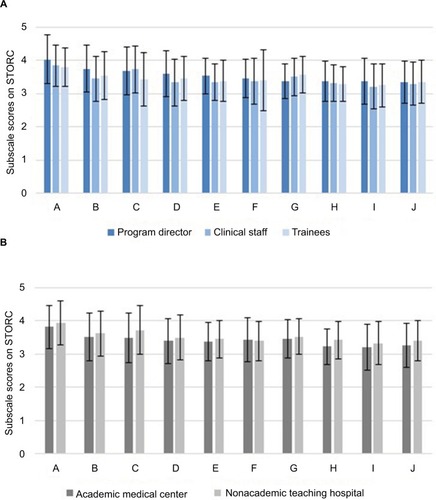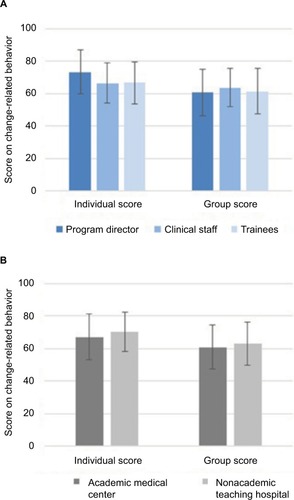Figures & data
Table 1 Subscales and topics covered by the STORC questionnaire
Table 2 Descriptive characteristics of the respondents
Table 3 Main effects of group and type per response variable
Figure 1 Subscale scores on the STORC questionnaire per respondent group (A) and type of hospital (B).
Notes: This figure shows the average subscale scores and standard deviation on the STORC questionnaire divided by groups of respondents (A) and type of hospital (B). A–J subscales of the STORC questionnaire. A = formal leader; B = appropriateness; C = staff culture; D = involvement; E = clarity of mission and goals; F = necessity to change; G = pressure to change; H = management support and leadership; I = implementation plan; J = project resources.
Abbreviation: STORC, Specialty Training’s Organizational Readiness for curriculum Change.
Abbreviation: STORC, Specialty Training’s Organizational Readiness for curriculum Change.

Figure 2 Scores on change-related behavior per respondent group (A) and type of hospital (B).
Notes: This figure shows the average scores and standard deviation for change-related behavior divided by groups of respondents (A) and type of hospital (B). The individual score shows how respondents judged their own reaction to change whereas the groups score shows the score they gave to their clinical teaching teams overall. The scores represent the 5 types of change-related behavior: 0–20 active resistance, 21–40 passive resistance, 41–60 compliance, 61–80 cooperation, 81–100 championing.


